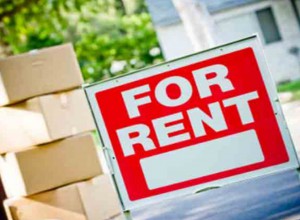 Want to know what’s going on in the rental markets around Australia?
Want to know what’s going on in the rental markets around Australia?
Just as the property sales markets around Australia are fragmented, so are the rental markets as illustrated by the latest leasing data released by Rent.com.au which shows the shift in Australian median rental property prices (both metro and regional) and rental affordability.
Here’s what they had to say:
Report Highlights
- Sydney’s excessive rental price growth may soon be a thing of the past as prices look to be slowing.
- Demand increases for Perth rental properties with the velocity of properties turning over quickly and prices beginning to stabilise and, in the case of apartments, starting to rise (up 6.7%).
- Adelaide is the cheapest place to rent a room in an apartment ($147/week), while Perth takes the lead for rooms in houses (just $122/week).

How the states and territories compared
Median rent and Price per room


Median rents
Sydney, Melbourne rentals stay flat, but Perth apartment rentals rise.
It’s unlikely that we’ll see a significant drop in Sydney property rentals this year, but cooling demand continues to affect the cost of apartments and houses, which stayed relatively flat in February.
In Australia’s smallest capital city, rental demand in Hobart is also high and continues to grow; house rental prices were up 7.3% to $440/week month-on-month.
Slower price growth in the Brisbane rental market in February likely reflects low employment growth and the risks of oversupply in the apartment segment, but this may have bottomed out.
After a prolonged period of falling rents and soaring listing numbers, Perth’s rental market has strengthened.
Apartment prices jumped 6.7% to $320/week in February.
Rent.com.au Chief Executive Officer, Greg Bader said the jump marked the first sign upward movement since November last year:
“Where rents were once declining month-on-month, Perth’s median rent has started to show some good signs of stabilisation and recovery — likely some welcome news for landlords and property investors,” he said.
Unsurprisingly, Sydney hangs tight to its no. 1 most unaffordable position for both apartments and houses. 
Median house rents, in fact, rose 1.7% in February to $610/week.
The second highest rents were in Canberra, where the median rent for an apartment rental was $430/week and for houses, $522/week.
Melbourne apartments followed close behind at $422/week.
Brisbane, Adelaide and Darwin were the three capitals to record a fall in median rental prices for houses in February.
Price per room
Perth, Adelaide still hottest spots to score a shared accommodation bargain.
Renting a whole apartment or house isn’t for all house hunters.
Depending on circumstances, renters may find it easier to apply for shared accommodation to share with other renters, rather than going it alone and paying the full amount.

According to RENT’s latest report which considers the room price metric (or price per room), Adelaide is the cheapest place to rent a room in an apartment ($147/week), while Perth takes the lead for rooms in houses (just $122/week).
The metric also showed that Sydney — somewhat unsurprisingly — once again outranked all other state/territory capitals at $275/week for a single room (national price per room).
Broken down by property type, both apartments and houses were least affordable of all capitals.
Mr Bader said RENT developed its price per room metric in a bid to improve the rental journey for Australia’s rental market.
“Today, a lot of the data out there is largely aimed at property owners who want dwelling prices and vacancy rates — figures that aren’t strictly relevant to our renting community.
Our price per room metric helps us look differently at the cost of renting and gives those renters who want to find shared accommodation a better, more accurate representation of how they need to budget.”
 Regional rents
Regional rents
NT stable but no change for the country’s most unaffordable regions.
There was no real relief in sight for renters in the Northern Territory’s regions; the territory remained the most unaffordable of all states/territories in February — the median price in the outlying areas was $430/week.
New South Wales and Queensland regional areas both recorded an increase in the median rent month-on-month, up 2.6% (NSW) and 2.9% (QLD).
Otherwise, median rents remained relatively healthy across the rest of the country, with mild price drops in Victoria (down 1.7%), Western Australia (down 1.5%), South Australia (down 3.7%) and Tasmania (down 5.2%).

Time on market
Australia’s rental market starts to move in February.
The average number of days on the market in Perth in February improved significantly in February, taking 37 days on average to lease an apartment, versus 33.7 for a house, down 23% and 19% respectively.
“Some healthy leasing activity has increased demand, which means tenants will have had to act faster to secure a rental they want,” Mr Bader said.

“It’s good news because it shows that landlords are taking heed of advice from their property managers and pricing their properties competitively from the start.
“Another hot area to watch for is Sydney’s rental market, with a wave of rental demand from January to February that’s spread across the local market and dropped the apartment time on the market down 26% to 21.5 days, versus 24.8 days for houses (27% quicker than January).
“We’re already seeing the velocity of properties there turning over quickly and the number of properties available for rent dropping,” Mr Bader said.
“Of course, the knock-on effect of high rental prices in Sydney is the pressure it puts on people trying to save for a deposit; the longer people must rent, the more demand it places on the rental market.

No comments:
Post a Comment